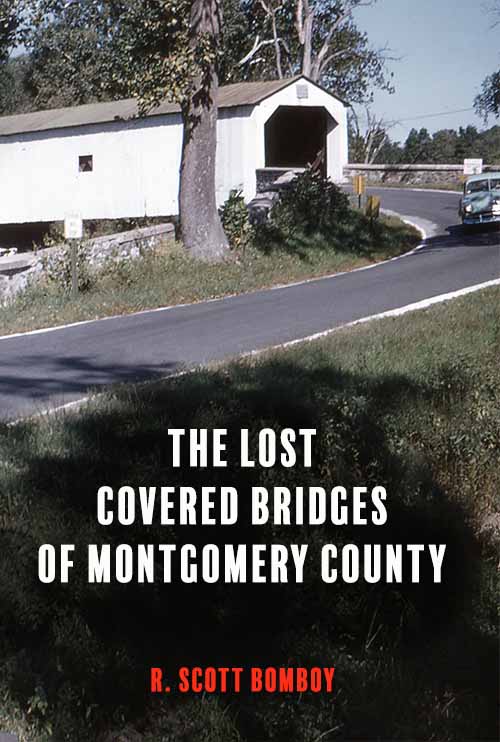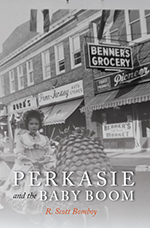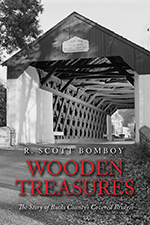In 1965, author and humanitarian Pearl Buck was asked to write a brief letter for a marketing brochure for the Pennridge region. This long-lost piece of history shows how much this legendary figure valued her neighbors.

Pearl Buck at Pennridge High School, 1969
By that time, Buck had lived in Hilltown Township for 30 years since moving there with her husband, publisher Richard Walsh. In fact, she was well-known as “Mrs. Walsh” in the community. In 1949, Buck along with several friends, founded Welcome House, an early effort to promote the adoption of biracial children. Richard Walsh passed away in 1960. But Buck continued to remain part of the Pennridge community.
When Buck formed Welcome House, she turned to Lloyd and Viola Yoder to help the first children placed in new homes become accepted. Today, Lloyd is better known as the legendary Pennridge football coach Poppy Yoder. When Yoder died in 1967, the Perkasie News Herald’s Buzz Cressman noted Yoder’s role in making Buck’s vision a reality. “The fact that Pearl Buck chose Poppy Yoder to train and guide her Asian-American children in his home was the supreme compliment to this man.”
The Nobel Prize recipient appeared at Pennridge High School on numerous occasions, as well as at PTA meetings, 4H gatherings and the Perkasie Lions Club. In 1957, the school invited Buck to its graduation. Buck was the first woman to address a local graduating class as a featured speaker, the News-Herald reported. She spoke to the largest crowd gathered, at the time, at the high school.
“You are ready to step out into the world, never lose sight of the fact that we are true Americans to the degree that we practice our ideals. … It is our belief in freedom, human equality, equal opportunity and the freedom to pursue our rights that makes us great. Everybody cares what we do because we stand for these ancestral ideals. Money doesn’t influence other nations as much as our practicing of our ideals. Our weak spot is where we fall down in our practicing of our ideals in race prejudice. The price of ideals is the practice of them. The price is high, but the rewards are great.”
In her letter to the Pennridge marketers in 1965, Buck explained why the community meant so much to her. “I shall always be grateful to the people of the Pennridge area. Why? For many reasons, for they have been good neighbors to me, allowing me to live here in peaceful privacy to do my work. I welcome this opportunity to express my love and appreciation,” she said.
“Yes, I have many reasons to be grateful to the people of this area, but foremost perhaps is the help they have given and do give to Welcome House, an adoption agency set up nearly nineteen years ago, especially for children of Asian-American ancestry, born in the United States. I had never thought of an adoption agency as part of my life and work. But I was given two babies, one Christmas, and these were what today we call Amerasian children, the name suggested by the State Department in Washington. My husband and I were already beyond the age of small babies, we had a house full of children as it was, and I looked for an adoption agency.”
“No one would accept these children of mixed race. I thought then of finding kindly families of our neighborhood who would care for these children, and others like them, in their own homes.”
“I did not wish to introduce a new element into our neighborhood, however, without finding out first how our neighbors would feel about it. Therefore I invited our leading citizens to meet in our home, and after describing the situation I said I could only bring these children into our area if the people here would welcome them and accept them as part of our life. I was happy when the elder Mr. Stauffer, owner of the store in Dublin, said, “We will be proud to have these children.”
“The first group of nine children joined the family of Mr. and Mrs. Lloyd Yoder. They have grown up now, some are married and have children of their own. Some are going to college. All have been happy in our schools, and neighborhood activities, and I thank the kind people who have made this possible. I believe that it has been worthwhile for all of us, for these children, born Americans, though they are, have brought the world into our community, and for this we thank them. Not every community can learn so pleasantly, day by day, how to live together in one world.”
Buck concluded: “Two small lost children appeared in our neighborhood one day, and thanks to the kindness of the people in Pennridge, thousands of children in the world are finding new opportunities for life.”












